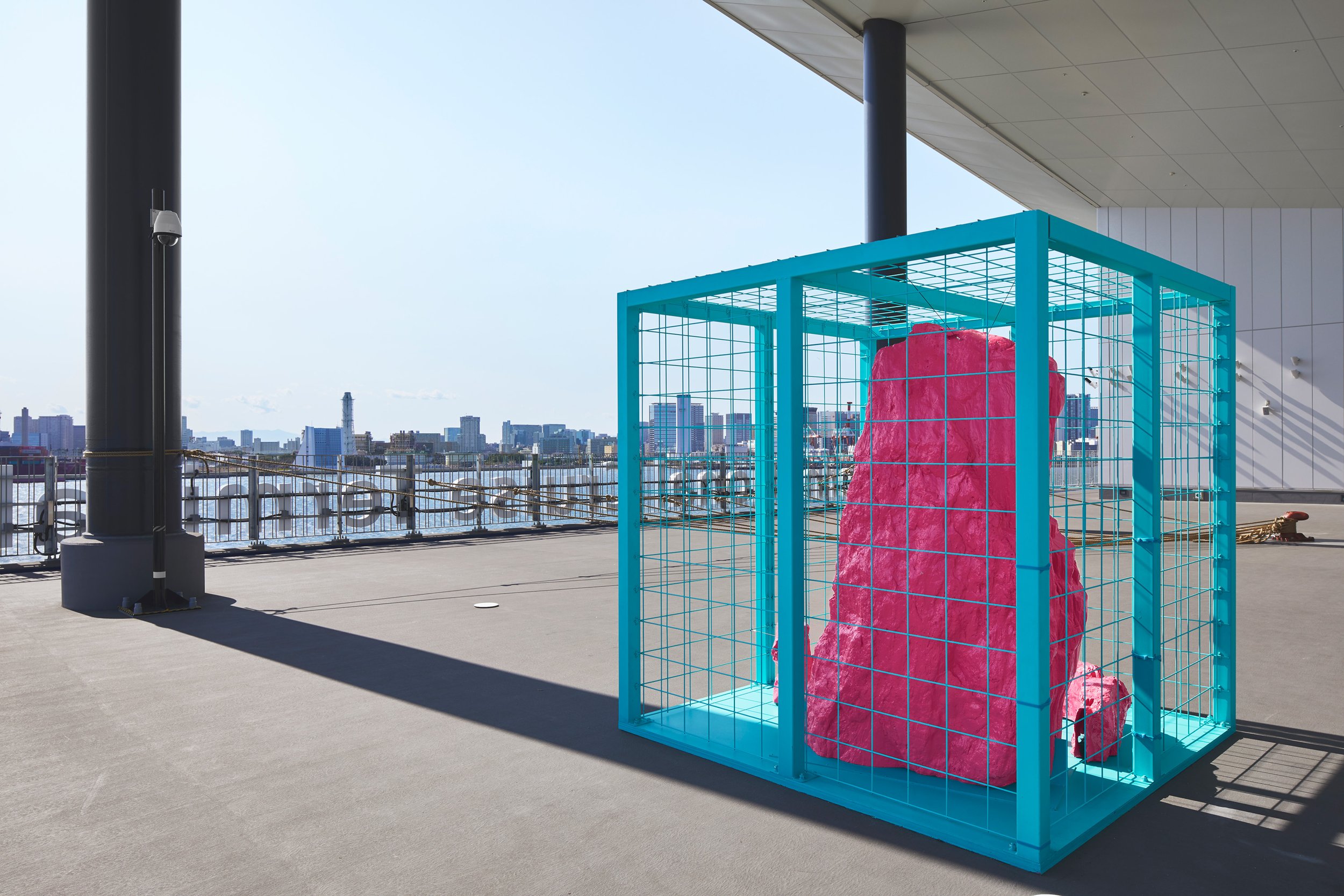Since ancient times, “Ma” has been an important concept through which time and space become one. This idea of “Ma” is best embodied in the traditional Japanese-style garden. Within this landscape, rocks, water, plants, and structures, such as bridges, are laid out in such a way as to create a device that enables temporal and spatial comings and goings between past and future and between this world and the next. Based on research such as this on the “Ma” elements of traditional Japanese-style gardens, this work creates a new interpretation of gardens through spatial design and visual expression. Overlooking the Tokyo metropolitan area, the Tokyo International Cruise Terminal is an international port where people and goods from throughout Japan and the world come and go with the international cruise ships that dock there making the facility a hotpot of nationalities. You could say this is a transient place where the everyday is suspended and foreignized. Furthermore, across the water there is a vast industrial zone from which function-serving industrial products are shipped. Based on the characteristics of this venue, the exhibit creates a “garden” capturing the “midway” point in the process of transforming objects released from their functions into a landscape garden.
FUJIKURA Asako conducts research on spatial recognition, mainly about MA (negative space), which has been an important concept in Japan since ancient times, and she creates new scenery that emerges temporarily. In a Japanese-style garden, spaces that can be recognized as nonconsecutive in time and space are constructed with natural objects and artifacts. FUJIKURA expresses the MA evoked by a Japanese-style garden through space design and visual expression in the context of the exhibition venue at the Tokyo International Cruise Terminal, the ocean that the facility overlooks, and the industrial landscape spreading across the background behind the terminal.
Japanese-Style Garden
Japanese-style gardens are designed spaces unique to Japan where the natural landscape is created artificially by arranging a pond, bridges, trees, and stones. A landscape that can be enjoyed from season to season is commonly created in the gardens. (culture gate to japan)
Project Overview
title Midway Stone
Year 2021
Material iron container, bollard, hemp rope, video, QR code, FRP stone
Exhibition Back Tokyo Forth
Production cooperation
Concept Advisor: HARA Rurihiko,SANO Fumihiko
videography / photography : SATO Yuri
Production assistant: SUZUKI Hiroaki
3DCG assistant: YAMADA Tetsuma
Photography cooperation: Zuisen-ji Temple; Komyo-ji Temple
Installation photo by Akira Arai(Nacasa & Partners Inc. )



